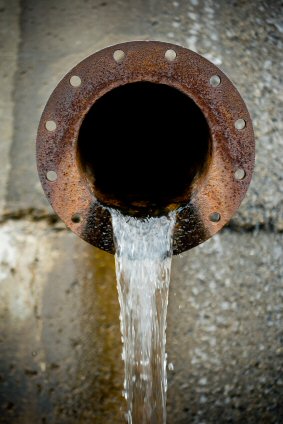30 April 2008
Nanoparticle Laced Wastewater Could Compromise Treatment Plants
by Kate Melville
 Silver's prodigious ability to kill bacteria hasn't gone unnoticed by consumer product manufacturers, resulting in a growing number of household items that use silver nanoparticles to suppress bacterial populations. But these new products may unintentionally jeopardize water treatment plants, says a University of Missouri (MU) researcher who has found that the nanoparticles can destroy the benign bacteria used to remove ammonia from wastewater.
Silver's prodigious ability to kill bacteria hasn't gone unnoticed by consumer product manufacturers, resulting in a growing number of household items that use silver nanoparticles to suppress bacterial populations. But these new products may unintentionally jeopardize water treatment plants, says a University of Missouri (MU) researcher who has found that the nanoparticles can destroy the benign bacteria used to remove ammonia from wastewater.
Several products containing silver nanoparticles are already on the market, including socks containing silver nanoparticles designed to inhibit odor-causing bacteria and high-tech washing machines that disinfect clothes with the tiny particles. But the positive effects of that technology may be overshadowed by the potential negative environmental impact, says Zhiqiang Hu, an assistant professor of environmental engineering in MU's College of Engineering.
"Because of the increasing use of silver nanoparticles in consumer products, the risk that this material will be released into sewage lines, wastewater treatment facilities, and, eventually, to rivers, streams and lakes is of concern," explained Hu in the journal Water Research and Environmental Science & Technology. "We found that silver nanoparticles are extremely toxic. The nanoparticles destroy the benign species of bacteria that are used for wastewater treatment. It basically halts the reproduction activity of the good bacteria."
Perhaps more worryingly, tainted wastewater treatment "sludge" used as a fertilizer could compromise the soil used to grow food crops.
Hu is now following up with a second study to determine the levels at which the presence of silver nanoparticles become toxic. He will determine how silver nanoparticles affect wastewater treatment processes by introducing nanomaterial into wastewater and sludge. He will then measure microbial growth to determine the nanosilver levels that harm wastewater treatment and sludge digestion.
Related:
Nanotech Gone Bad: Who You Gonna Call?
From Little Things, Big Conundrums Grow
Persistence Of Triclocarban Surprises
Wastewater Reveals A Cocaine Surprise
Source: University of Missouri-Columbia
